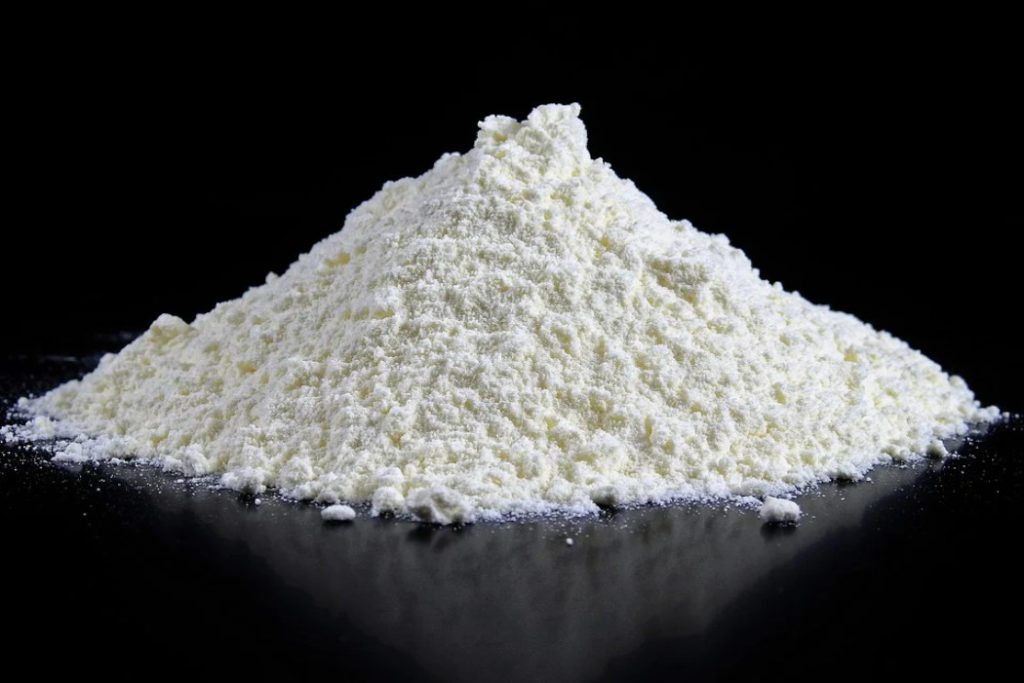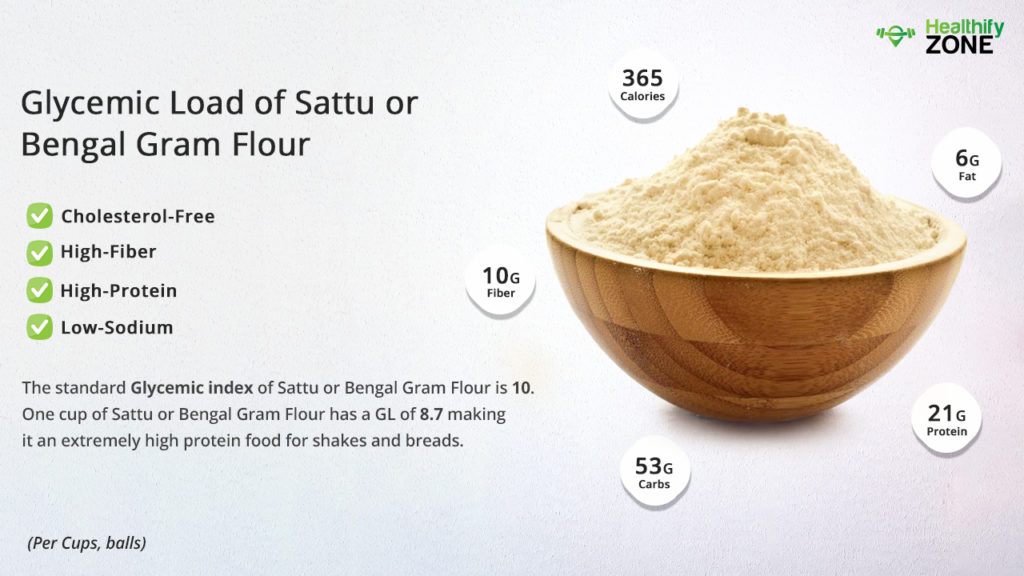The measurement of the carb content of food with the pace with which it increases the blood glucose levels is reflected in the Glycemic Load. According to the same, they assign a number to each of the food items based on the rise it causes, which is shown in the Glycemic Index. This is a simpler way of making healthier diet choices. Glucose causes a higher rise in blood glucose levels in comparison to fructose.
Gram flour is also popularly known as chickpea flour, besan, garbanzo bean flour and has been a staple in the Indian diet for years now. It comes from chickpeas, particularly Bengal gram, which is a pretty versatile and delicious legume that has a mild and nutty taste. According to the International GI Tables, it has a GI of 10, which is low. It is known around the world for being an excellent gluten-free alternative for flour.

Gram Flour has become increasingly popular now, and it comprises healthy nutrients like
- Fiber
- Thiamine
- Folate
- Iron
- Phosphorous
- Magnesium
- Copper
- Manganese
How to Calculate Glycemic Load of Gram Flour?
The standard Glycemic index of gram flour is 10. If we want to talk about diet, the key to prevent diabetes or any chronic illness is to distribute the carbohydrate consumption content throughout the day and manage the sugar levels in the body correctly—however, the glycemic load and glycemic index of gram flour is low and thus it a great alternative of maida.

The Formula/Procedure For Calculation of Glycemic Index of the Gram Flour :
GL = GI * carbs / 100
where
- GL – glycemic load;
- GI – glycemic index;
- and carbs – the amount of carbohydrates in the portion.
| SL.NO | GRAM FLOUR BY WEIGHT IN (g) | GLYCEMIC LOAD |
| 1. | 100 g of Gram Flour | 5.8 (low) |
| 2. | 250 g of Gram Flour | 14.4 (medium) |
| 3. | 500 g of Gram Flour | 29 (high) |
| 4. | 1 Kg of Gram Flour | 58 (high) |
| 5. | 1 Cup of Gram Flour (150 g) | 8.7 (low) |
Is Gram Flour Safe to Consume If You Have Diabetes?
Gram Flour has only half the carbs as there is in regular wheat flour, and thus, it would affect your blood sugar levels differently. GI measures how quickly a food item causes an increase in your blood glucose levels. White flour has a GI of around 70, while gram flour has a GI of about 10. Two studies had shown that eating foods that are made with gram flour kept blood sugar levels lower than when you were consuming food prepared with white flour. That said, it is safe to consume and must be incorporated into your diet.
Can I Eat Gram Flour During a Fat-Loss Diet?
You can eat gram flour during a strict fat-loss diet. It is high in protein, which causes decreased hunger and increases the number of calories burnt. You can include 250 g of it.

- 250 g of gram flour has a GL of 14.4 which is in the permissible levels.
- It is high in protein which keeps you fuller for longer and your body burns more calories to digest these foods.
- It helps in muscle building, weight management, and recovery from injury.
Can I Eat Gram Flour During a Low-Carbohydrate Diet?
Gram flour is an excellent food item for a low-carbohydrate diet. You can add about 250 g of it to your diet. It is lower in carb content compared to regular flour and is a great alternative for the same.
Is Gram Flour High in Sugar?
100 g of gram flour has 11 g of sugar and 58 g of carbs. In comparison to wheat and white flour, this is considered a low-carb alternative. It is low in calories and carbs and is packed with protein and fiber, which will be helpful.